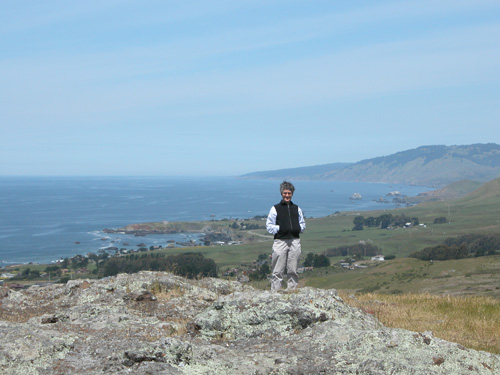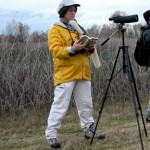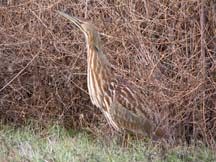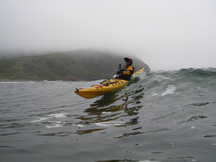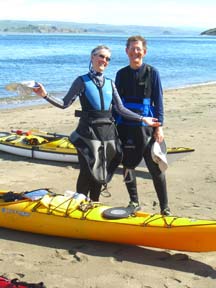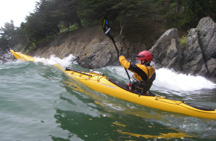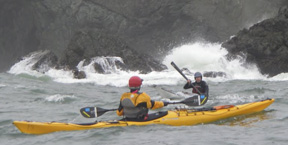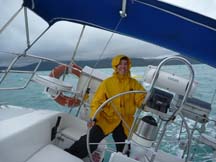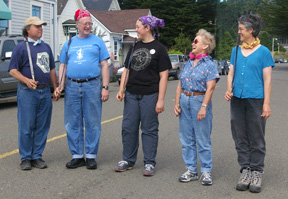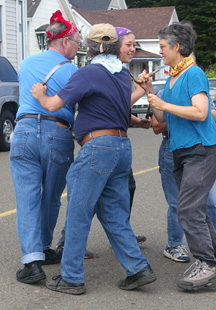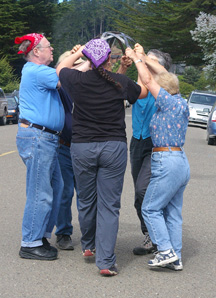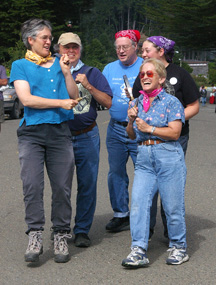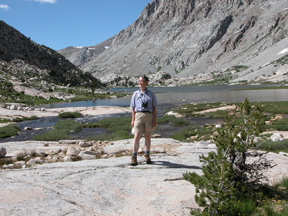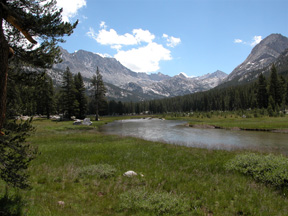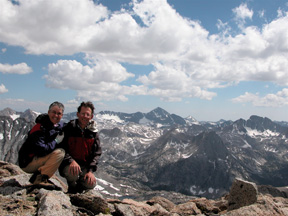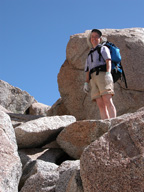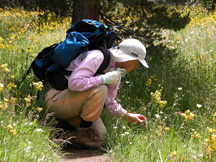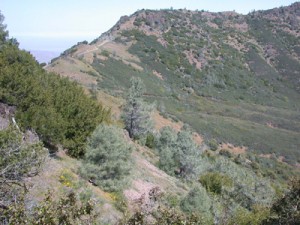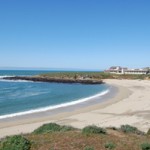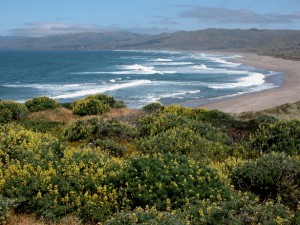The California coastline north of Bodega Lab. It’s a pretty inspiring view!
Thoughts about my current research
I’ve worked on plants for most of my career but most recently, I’ve been getting very interested in microbial ecology and evolution. Working with microbes demands a very different mindset. They have such large populations that we might be able to assume that anything that could evolve has evolved and therefore that populations are at evolutionary equilibrium. However, the rhizobia that I study might not fit that dogma. Their populations in the soil might be small relative to other soil bacteria and they might undergo severe bottlenecks when they enter host nodules, leading to smaller effective population sizes than expected for non-symbiotic bacteria.
Using plants to bioassay the rhizobial population, we’ve found some really interesting evidence of spatial structure in our Bradyrhizobium populations and it has made me start thinking about how rhizobial distributions might limit host plant population migration and vice versa.
I really enjoy teaching. Even the very large courses are fulfilling. I especially savor the challenge of helping students understand and appreciate the value of mathematical models in biology It’s so exciting to see that “lightbulb” moment when students grasp a new concept or realize how one new tidbit of information fits into a larger theoretical framework. As an emerita I no longer teach in the classroom, but I love mentoring students in the lab.
As a Professor, I worked very hard. I’m still working pretty hard as an emerita. When I get time off, I really enjoy getting outdoors. We live in one of the most beautiful places on the planet and I love taking advantage of the many outdoor activities we have available in (and from) the Bay Area.
Birding
Kayaking … surfing is really fun! So is playing in the rocks!
Sailing (well, that was in Australia)
Dancing (this is rapper-sword dancing on the street in Mendocino)
And, backpacking!
Here’s our trip over Lamark Col into Darwin Bench and Evolution Basin.
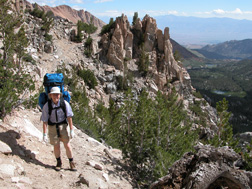
In the ancient past, I worked in the chaparral around Ventura County, Ca. As an undergraduate, I did ground truthing for a project with Bill Schlesinger that used historical aerial photos to determine whether fire suppression causes openings in the chaparral to shrink over time, which might limit the take-off opportunities for California Condors.
This work involved crawling around on hot steep hillsides measuring and aging shrubs. We wore goggles to protect our eyes from the twigs.
Then I went off to graduate school in North Carolina. I studied the effects of fire and mowing on nutrient cycling in pocosin shrubs.
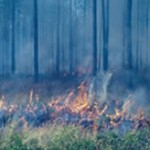
Pocosins, also called shrub bogs, are similar to chaparral except that they occur on flat, slightly elevated bogs in North Carolina. I think I chose to work on them because they made me homesick for chaparral! This work, too, involved crawling around under shrubs, this time in muck, measuring shrubs and counting their leaves. Springtime was beautiful. Orchids, pitcher plants, and cotton grass bloomed.
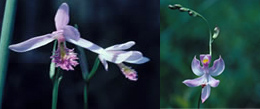
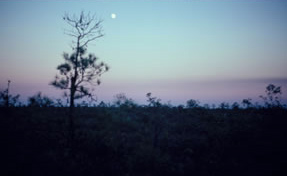
Summers were brutal. It was hot, sticky, and buggy. Buckeye butterflies used me as a salt lick and dragonflies used me as a bait station, voraciously consuming the mosquitoes that I attracted. The only redeeming feature of this habitat in summer was the absence of chiggers. In the fall, hunters ran their dogs after deer. The hunters stayed along the roads and thought I was crazy to go out into the bog. In the winter, it was cold and icy and I had the bog to myself.
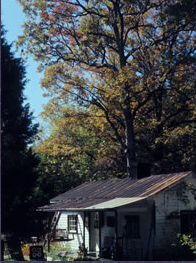
In North Carolina, I lived on an abandoned dairy farm that we called the Morreene Road Adult Leisure Community. Tom and I lived in the hired hand’s cabin and had a beautiful vegetable garden that helped feed us while we subsisted on one graduate student stipend. Other biology graduate students lived in the big houses out by the main road. Upon finishing my Ph. D., I joined Shrublands Anonymous, a 12-step program for shrub addicts, and began working on tall morning glories in farm fields. This work involved crawling around a field measuring holes in leaves. I finally figured out how to do science, and during that time I successfully addressed some interesting hypotheses about plant-herbivore interactions.
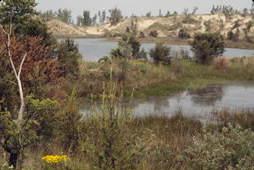
We moved to Chicago in 1991. To get a nature fix, we hung out at the Indiana Dunes National Lakeshore.
But, it was crazy to spend winters in Chicago and summers doing fieldwork in the North Carolina piedmont. North Carolina is beautiful in spring and fall; it is not a pleasant place to work outdoors in summer. Meanwhile, I had lapsed from Shrublands Anonymous, thinking that I was no longer vulnerable to the shrub addiction. When I moved my research from North Carolina to California, I learned otherwise.
In the mid-1990s, I began research at the Bodega Marine Reserve (BMR) on the Calfifornia coast, just north of San Francisco. For quite some time, I spent time crawling around counting seedlings, looking at seed dormancy, and observing seed predation by mice. At BMR, I finally discovered that fieldwork can be fun as well as intellectually interesting! The temperature is cool, perfect for working. It is often foggy, but always bright. During this time, I worked primarily on the yellow bush lupine, which is, you guessed it, a shrub! But, look what a beautiful shrub it is!
I no longer think of my shrub addiction as an affliction. Instead, I embrace my work on shrubs but manage to keep a healthy balance by also studying several native California annual legumes. Further, my growing interest in the nitrogen-fixing bacteria of these plants reduced the amount of time I spend working in the field. To balance that loss, I spend more of my free time in the out-of-doors.
<a rel=”me” href=”https://ecoevo.social/@ELSimms”>Mastodon</a>

